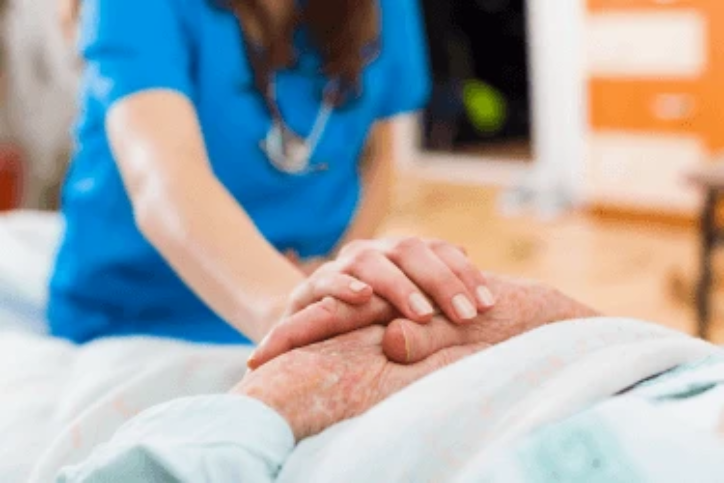
What Your Body Language is Telling Patients
For nurses, understanding body language is key to improving patient satisfaction and comfort to patients and families. Is your body language sending the right message?
Time spent in a medical setting can be stressful for patients and families, who may express anxiety through frustration, impatience and anger - particularly if they believe they’re being routinely dismissed or ignored.
Because nurses spend more time with patients than any other member of the healthcare team, it’s crucial that they understand that body language is equally as important as what’s actually said during patient interactions.
Study up on body language and how to use it to communicate with patients.
The Role of Nursing in Patient and Family Comfort
Nurses have a large role in making patients and loved ones feel more comfortable both physically and emotionally.
When nurses show interest, empathy and understanding, patients feel more encouraged to be better participants in their healthcare management and invest more trust in their healthcare team.
Healthy provider-patient relationships result in faster diagnoses, more effective treatment plans and better patient outcomes.
Because healthcare systems continue to increase patient numbers and expectations, there simply isn’t enough time during shifts to carry on lengthy, in-depth conversations with every patient. However, investing more time may not be the only or best option.
Patients want answers, but they want those answers presented simply, accurately and with genuine sensitivity for their concerns.
It’s important for them to feel they are understood and that you are genuinely there for them. Patients want to know that they matter, that they aren’t just another chart or number and that you understand the questions they have — however trivial on the surface — are significant to them.

Understanding Body Language and its Role in Communication
Body language is a form of non-verbal communication that uses eye contact, movements, gestures and facial expressions to convey messages that are used in place of or in combination with verbal messages. Body language can be used to:
- Express emotion
- Convey attitudes
- Demonstrate personality traits
- Support verbal communication
Body language gives a wealth of information to patients and can convey a sense of warmth, empathy, caring, reassurance and support. Unfortunately, if you’re not careful, it can also reflect anger, irritation, disinterest or boredom.
Always remember to monitor your body language when addressing patients and their families. Follow these tips to make sure your body language aligns with your verbal messages and intentions.
1. Pay Attention to Your Facial Expressions
The face offers a wealth of non-verbal information to listeners. The slightest movements can convey approval, disapproval, happiness, anger, fear or disgust.
Showing even a faint frown while reading a patient’s chart can increase a patient’s anxiety and can damage trust, especially if the patient was given a positive verbal message.
The more complex the patient’s medical situation is the more conscious you must be about facial expressions.
Use facial expressions to show an emotional response when your patient or their loved ones are speaking. If they show concern, make sure to match your expression to show that you are listening with interest.
2. Make Eye Contact
Eye contact is essential for connecting with patients and gaining their trust. Though reading charts and taking notes is necessary, focusing too long on these processes can have negative consequences. Avoiding eye contact gives the impression of cold disinterest.
Patients who believe their providers lack interest in their personal care are more likely to withhold valuable information that could be beneficial for successful diagnosis and treatment.
Make sure your eyes and the eyes of your patients are at about the same level. When it becomes necessary to look away from the patient to fulfill your duties, continue to make occasional eye contact to reinforce that you’re still there for the patient.
3. Face the Patient
Because nurses are constantly multi-tasking, this is often easier said than done. Reading charts, making notes, setting up equipment and making adjustments of nearly every kind can make it difficult to face patients at all.
Be aware that turning your back for prolonged periods gives the impression that you are intentionally avoiding the patient.
Patients often feel helpless and vulnerable and are further susceptible to feelings of isolation and avoidance.
Facing patients is a concrete way to let them know they aren’t invisible. On occasions when turning your back is absolutely necessary, make sure to briefly explain why so patients feel included in the process.
4. Lean Forward and Nod
It’s important for practitioners to provide non-verbal cues when actively listening. Backing away from patients while they speak sends a clear message that you’re the one in control of stopping the conversation before it even starts.
Closing the proximity between you and your patient can be done by simply leaning forward.
This gesture signals that you are interested in what your patients have to say. Occasionally nodding your head at appropriate times while the patient is speaking shows that you’re engaged and paying attention.
5. Remove Barriers
Physical barriers may include large objects such as overbed tables or medical equipment or smaller objects such as clipboards and electronic devices.
Intangible barriers such as time constraints and postures that include crossed arms or legs may be even more off-putting.
Crossing your arms is a clear indication of lack of interest in what the speaker saying. Sitting with crossed legs makes you appear less approachable and can lead the patient to feel isolated and hesitant about relating information or experiences.
It’s vital that providers appear to be as open and approachable as possible.
Remember that individuals seek medical attention or advice because they are in pain or have serious health concerns.
Sometimes it’s easy to forget that patients may be intimidated or overwhelmed by anxiety, fear or other negative thoughts and feelings.
Effective communication that combines the skillful use of body language with verbal messages ensures patients can enjoy positive interactions with providers in all circumstances.
Patients want more than a diagnosis and treatment plan. They want what everyone else wants — to feel respected and valued as individuals — and understanding body language helps a nurse meet that need.
Additional Nursing Resources:
- AMN Passport: Our all-in-one nursing app for booking nursing jobs.
- Nursing Salary & Benefits: AMN Healthcare offers our nurses some amazing salaries and benefits. Find out what's in store for your nursing career today.
- Travel Nurse Licensing: Find out about nursing requirements for all 50 states.
- Exclusive Facilities: AMN Healthcare has relationships with the most sought-after healthcare providers.
- Refer-a-Friend: Make up to $2,000 per referral.



